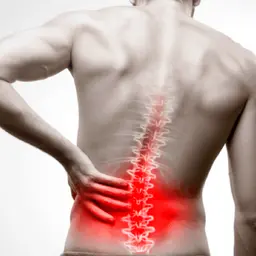Pain, Policy, and Healthcare: Navigating the U.S. Pain Management Landscape

Pain management in the United States has evolved significantly over the years, driven by advancements in medical science, shifts in policy, and a growing recognition of the need for comprehensive care. This article explores the complex interplay between pain, policy, and healthcare, and how these elements shape the current landscape of pain management in the U.S.
Understanding Pain Management
Pain is a universal experience, affecting millions of people in various ways, from acute pain resulting from injury or surgery to chronic pain conditions like arthritis or fibromyalgia. Effective pain management is crucial not only for improving quality of life but also for enabling individuals to function in their daily lives.
Traditionally, pain management has relied heavily on pharmacological interventions, including opioids, nonsteroidal anti-inflammatory drugs (NSAIDs), and acetaminophen. However, the opioid crisis has brought renewed attention to the need for a more balanced and multidisciplinary approach to pain management.
The Impact of the Opioid Crisis
The opioid epidemic, which began in the late 1990s, has had profound implications for pain management policies and practices. The widespread use of prescription opioids led to a significant increase in addiction, overdose deaths, and other public health concerns. In response, federal and state governments implemented a range of policies aimed at curbing opioid prescribing and reducing the potential for abuse.
These policies include stricter prescription guidelines, mandatory prescription drug monitoring programs (PDMPs), and increased access to addiction treatment services. While these measures have contributed to a reduction in opioid prescriptions and related harms, they have also led to unintended consequences, such as reduced access to pain management for individuals who genuinely need opioids for legitimate medical reasons.
Shifts in Pain Management Policy
In recent years, there has been a growing recognition of the need for a more comprehensive approach to pain management that goes beyond simply reducing opioid use. The U.S. Centers for Disease Control and Prevention (CDC) released guidelines in 2016 to provide recommendations for opioid prescribing, emphasizing the importance of balancing the benefits and risks of opioid therapy and exploring alternative treatments.
Additionally, the National Pain Strategy, developed by the U.S. Department of Health and Human Services, aims to improve pain management through a more integrated approach that includes non-pharmacological treatments, patient education, and interdisciplinary care. This strategy highlights the importance of addressing pain from multiple angles, including physical, psychological, and social factors.
Integrating Non-Pharmacological Treatments
Non-pharmacological treatments play a crucial role in managing pain and reducing reliance on medications. These treatments encompass a wide range of approaches, including physical therapy, cognitive-behavioral therapy (CBT), acupuncture, and mindfulness-based practices.
Physical therapy focuses on improving movement and function through exercises and manual techniques, helping patients manage pain and prevent disability. CBT and other psychological therapies address the emotional and cognitive aspects of pain, helping individuals develop coping strategies and reduce the impact of pain on their mental health.
Acupuncture, a traditional Chinese medicine practice, involves inserting thin needles into specific points on the body to alleviate pain and promote healing. Mindfulness-based practices, such as meditation and relaxation techniques, help individuals manage pain by increasing awareness and reducing stress.
The Role of Healthcare Providers
Healthcare providers play a critical role in navigating the pain management landscape. They must balance the need for effective pain relief with the potential risks of treatment, including the risk of addiction and overdose associated with opioids.
A multidisciplinary approach to pain management is essential, involving collaboration between primary care physicians, pain specialists, physical therapists, psychologists, and other healthcare professionals. This team-based approach ensures that patients receive comprehensive care that addresses all aspects of their pain.
Providers also need to stay informed about evolving guidelines and best practices in pain management. Ongoing education and training are essential to ensure that healthcare professionals are equipped with the knowledge and skills to provide safe and effective care.
Challenges and Future Directions
Despite progress in pain management policies and practices, several challenges remain. The stigma associated with chronic pain and opioid use can prevent individuals from seeking help and receiving appropriate care. Additionally, disparities in access to pain management services can exacerbate inequalities in healthcare.
Addressing these challenges requires a continued focus on patient-centered care, increased access to diverse treatment options, and efforts to reduce stigma and improve education about pain and its management.
Looking ahead, the future of pain management in the U.S. will likely involve further integration of evidence-based practices, ongoing refinement of policies, and a continued emphasis on addressing the complex needs of individuals living with pain. Collaboration between policymakers, healthcare providers, and patients will be crucial in shaping a more effective and compassionate pain management landscape.
Conclusion
Navigating the U.S. pain management landscape involves understanding the complex interplay between pain, policy, and healthcare. The opioid crisis has highlighted the need for a balanced approach that incorporates both pharmacological and non-pharmacological treatments. By embracing a multidisciplinary and patient-centered approach, and addressing ongoing challenges, we can move towards a more effective and equitable system for managing pain and improving the quality of life for individuals across the country.
- Industry
- Art
- Causes
- Crafts
- Dance
- Drinks
- Film
- Fitness
- Food
- Игры
- Gardening
- Health
- Главная
- Literature
- Music
- Networking
- Другое
- Party
- Religion
- Shopping
- Sports
- Theater
- Wellness
- News


